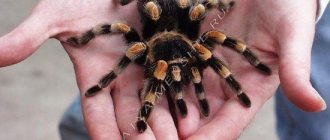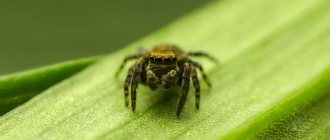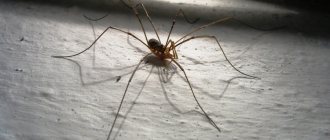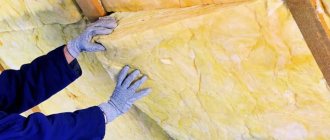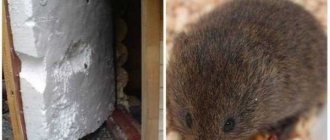If there are mice in a house, country house, or apartment, then the owners are guaranteed a headache. These uninvited little guests create a lot of difficulties and inconveniences, and the fight against them turns into a real war. It is especially difficult to catch or destroy them when the animals are in hard-to-reach places, such as the floor or suspended ceiling.
Squeaking and noise at night, damage to wires, pipes, insulation, unpleasant smell - this is an incomplete list of the “pranks” of long-tailed rodents. And although technology does not stand still and every year they come up with new and effective means to combat them, this problem remains relevant today.
If there is a dead mouse under the floor, it is very difficult to find and get it out. Therefore, it is imperative to fight against parasites. We told you how to do this in previous articles, in particular, how to get rid of them in your apartment.
Now we will talk about how to seal holes and cracks from mice.
How do rodents get under the floor?
Food is the main goal of long-tailed pests.
They are also looking for a place in the house where they can build a nest and reproduce. If you are leaving your dacha or country house for a long time, be sure to remove all food items that attract pests. After all, when the cold comes, the animal will penetrate underground by any means.
Under the floor, they can crawl through your front door and you won’t even notice! Once the mice settle there, they won’t really want to crawl out from under the floor.
Preventive measures
Preventive measures have been discussed more than once. The main principle is this: there are no pests in a clean house.
Therefore, adhere to simple rules:
- They constantly carry out general cleaning, during which they find and throw away all found garbage that is not of household or other interest;
- do not leave scraps on the table, under the table, but promptly put them in a trash can with a lid;
- do not clutter the house and apartment with unnecessary things;
- all products are kept out of reach in tightly sealed containers;
- They periodically inspect the residential area, seal up any mouse holes found, having previously prepared an unpleasant surprise for the rodent using poison or a mousetrap.
Fighting mice is not an easy task, but you can cope with the task. The main thing is to approach the issue with ingenuity and knowledge of the matter.
Danger of rats
It would seem that the rats live under the floor, and let them continue to live. There is probably no house where these pests would not exist. However, the harm they cause is real, and if this problem is not neutralized in time, the consequences will be dire.
So, rats under floors are dangerous:
- Constant fuss and noise at night. During the day, you most likely will not notice the squeaks and other sounds that rats make, but at night, when the house falls asleep and plunges into silence, constant noises from somewhere below begin to bother you. Because of this, there may be problems with sleep, and if the person is also impressionable, then mental problems;
- Problems in water supply and energy supply. Anything that gets in the way of rats will sooner or later be chewed through. Cables, telephone and Internet wires, fragile pipes of the water supply system are subject to this fate;
- Destruction of insulation. Most of the insulation materials that you decide to use to insulate your walls will most likely turn into either dust or a rat's nest, since its composition is well suited for breeding;
- With excrement. When rats come to the surface, they will leave their waste everywhere, which can become a serious problem during cleaning, as well as for children who can eat it;
- Diseases. Everyone knows that rats carry a terrible number of equally terrible diseases. And the more of them there are in the house, the higher the risk of catching some unpleasant disease. And if rats are starving, they can easily attack a person, which will further increase the risk of illness due to a bite;
- Corpse fumes. If the rat died under the floor, then there is no way to get it out. And her cold corpse will decompose for quite a long time, emitting corpse fumes, which, in addition to an unpleasant odor, can be harmful to health. The situation becomes especially dangerous in summer under the influence of high temperatures. Read about a way to get rid of corpse smell here.
If you find that a rat has chewed holes in the floor, they need to be repaired immediately. This can be done using sheets of metal, after throwing poison and broken glass there. Other rats will come through the newly formed holes in the floorboards, and the more quickly you react, the higher the chance that there will be fewer rats.
What are the dangers of a mouse infestation?
So, let's see what difficulties ordinary house mice can create under the floor:
- Constant noise at night.
- Gnawed cables, wires and pipes made from certain materials.
- Insulation materials turned to dust.
- A specific and not very pleasant “mouse” smell in the house.
- Found mouse waste in the morning wherever possible.
- Danger of contracting rodent-borne diseases.
And also such unpleasant phenomena as a dead mouse under the floor, which is not easy to find and pull out.
Now imagine that in a year a female gives birth to up to 7 mice in each of 10 annual litters. Those. in 12 months there will already be 60-70 new rodents in your house! And each mouse matures within just three months, and also begins to reproduce. At the same time, mice are fast animals: they can reach speeds of up to 12 km/h, jump up to 75 cm in length, and up to 40 cm in height. Just don’t let this problem take its course - they will eat the house too.
Where do rats come from under floors?
The main task of rats is to feed themselves and the population, as well as to produce as many of their own kind as possible. For this purpose, rats chew the floor and sneak into houses.
We suggest you familiarize yourself with: A spider is an insect or animal
Food
The main bait for all rodents is food. Therefore, it is very important, if you are the owner of a country house, do not be lazy to remove all the food from there before a long trip to the city or on vacation. Otherwise, there is a risk that by the time you return, the rats will completely fill the house.
Frame houses, which are erected quickly and are built from budget materials, are especially at risk. Rats can appear here even during construction, since quite often builders during lunch here and there forget pieces of food. Of course, rats will immediately come to the smell of something delicious.
Sometimes even well-insulated and protected houses become victims of attacks by hordes of rats. With the onset of cold weather, these parasites begin to hide under the floor. Unlike walls, the floor cannot be protected with metal sheets. This trick won't work here.
And here another difficulty arises: getting rid of rodent pests from under the floorboards will be much more difficult due to the inaccessibility of the underground space for humans. Therefore, at the construction stage, it may be worth thinking about how easy and unhindered it is for the owner of the house to enter the cellar, so that there is an opportunity to spread poison or remove dead rodents.
Overpopulation
Another reason for the appearance of rats can be overpopulation. When space becomes scarce in a certain area, rats begin to look for new places to give birth to babies. For these purposes, they can climb into a house or apartment. And if they are not eradicated, they will soon spread to even larger territories.
Do not leave food or trash near your home. This primarily attracts rats and mice
Extermination of rodents in city apartments
Rodents enter city apartments through cracks in the floor, through hoods and other small openings. There are especially many rats and mice where there is a garbage disposal. It is much easier to fight them in an apartment.
- The first and most reliable way is to seal all the cracks and holes in the floor with a building material that is resistant to rodents.
- You can buy a special sticky glue that is applied to paper and the animal simply sticks to it (although this is ineffective for rats).
- Of course, you can decompose the poison (fortunately, in any hardware store your eyes are wide open from the choice), but where is the guarantee that new individuals will not take a liking to your home?
- It is also effective to use electric repellers, the range of which is quite wide on sale. Absolutely harmless for humans and large animals (dogs, cats). But you must remember: if you have small pets (hamsters, guinea pigs, decorative mice and rats), then this method, for obvious reasons, will not work.
And one more circumstance: rodents are attracted by the uncleanliness of their owners, so one of the preventative methods for their appearance is ideal cleanliness.
Diagram of a homemade mousetrap
Expanded clay castle
You can make a so-called expanded clay castle. To do this, a layer of expanded clay is laid very tightly - 30 centimeters thick.
Floor laying technology:
- first layer: baked clay (expanded clay) is laid directly on the ground. The main thing is that it is thick and dense - at least 30 cm. This layer must be covered with polyethylene;
- second layer: two OSB-3 boards;
- third layer: laying expanded clay;
- fourth layer: place particle boards on top that are treated with synthetic wax and boric acid. Mice cannot tolerate the smell of these substances.
How to protect an already dried layer of foam
Often mice appear in the house when repair work has long been completed. In this case, you will have to act differently.
If possible, special protective structures are installed on top of the foam layer. This can be a piece of durable fiberglass mesh, fine-mesh metal chain-link, wood-slab boards, solid wood, or tin plates.
Aerosols against rodents based on rodenticides, which are sold in hardware and gardening stores, are considered to be quite effective. They repel mice, however, you will have to irrigate the foam sticking out of the walls once every 2-4 weeks.
You can also foam the repaired area a little and apply a little crushed glass and boric acid directly onto the uncured foam. If the layer of polyurethane foam is thick, this method will work much worse.
Liqui Moly anti-rodent spray
To protect foamed areas located in sheds and other non-residential premises, the following techniques can be used:
- scatter stove ash on the floor - it repels rodents;
- sprinkle the walls with mothballs or kerosene;
- hang mint, rosemary, tansy grass - mice don’t like them either.
Traditional methods
Few people are aware of the fact that mice and rats are unusually sensitive to odors. There are herbs that repel rodents for a considerable time:
- Elder. It repels them with a smell that they cannot stand. In addition, the roots of this plant secrete hydrocyanic acid, which is lethal to rodents. Conclusion: where elderberry grows, there is no place for rodents. You can cut the branches of the plant and put them in the basement, then rodents will not threaten your harvest.
- Blackroot (ratrunner). For a long time it has been considered the most highly effective plant against mice and rats, and is equally good in fresh and dried form. The powder is mixed into the bait as a poison. A bouquet of fresh grass placed indoors repels rodents forever. The poison is concentrated mainly in the rhizome.
- Sagebrush. Who is not familiar with the bitter-tart pleasant smell of this plant? Fresh or dried wormwood grass is laid out in the expected places of their appearance - and long-term disposal of them is guaranteed (pictured on the right).
- Tansy. It is a natural insecticide, helps in getting rid of mice, rats and all kinds of household pests: moths, flies, bedbugs, fleas.
Effective ways
- Cat. Well-known folk fighter against rodents. Undoubtedly.
- Ash. Sprinkle where the animals appear. Unable to bear the smell, they are forced to leave the place of discomfort.
- Mix 1:1 sugar with quicklime. Sprinkle as bait. The lime corrodes the insides and the rodent dies.
- Mousetraps, rat traps. They are reliable “comrades”, but you need to make sure that the cat does not touch the devices, otherwise the “smart” rats will avoid the traps.
- If there are animals in the cellar, you can “smoke” them out of there like this: take a piece of rubber, burn one end and throw it on the floor of the cellar or basement. Rubber does not burn, but smolders, releasing a pungent odor that suffocates mice and rats.
We suggest you read: Lethal dose of rat poison. Lethal dose of rat poison for humans
Whatever method of dealing with rodents you choose, you need to remember one thing: you need to go purposefully and to the end. To do this, it is possible to use a control complex, which includes various methods of destroying and getting rid of them. The right choice is yours!
Before laying the floors, you can add various slag, ash, tobacco dust, mint or dry wormwood to the insulation. Rats cannot stand the smell of these substances. When laying the foundation, it is recommended to sprinkle broken glass into the cement. When the rats gnaw on it, they will certainly cut their gums and mouth on the glass, and are unlikely to continue drilling work.
When you are leaving somewhere and the house is left unattended for a long time, you can hang bunches of dried mint or wormwood around the perimeter of each room in each corner. Small branches can also be placed near the baseboards on the floor.
Rats don't like the smell of burnt fur. Especially your own. But if it is not possible to find tufts of rat fur, you can take any, set it on fire and fumigate the room. But remember the fire safety rules. Do not accidentally drop smoldering wool on the floor or carpet. Use a glass jar for this.
For the same purpose, block houses are treated with concentrated solutions of lime or borax. Rats also try to avoid these odors.
Simple wormwood repels rats and mice
What can't mice chew through?
Basalt, granite, diabase, diorite and other durable rocks are unlikely to crumble if you chew them, but ordinary graphite and the like will give in quickly. Bricks are also not particularly durable, and rats actively sharpen them.
Interesting materials:
What do hares like to eat most? What destroys the liver the most? What did the king throw into the depths of the sea in a ballad? What will react with magnesium oxide? What will happen to the tattoo in a few years? How to find the term? What benefits does daily reading give? What does a class hour give? What does a paid YouTube subscription give? What does the striking blade enchantment do?
Fine mesh mesh
One of the most effective methods of protection against parasites is a fine-mesh galvanized mesh made of durable metal, through which a mouse cannot crawl.
Even at the construction stage, this mesh must be laid around the perimeter of the entire floor and, in addition, wrapped around the base.
Below we will provide photos that clearly show how best to arrange the floors. The most important thing is to cover all the corners with this mesh, do not leave a single joint unattended.
This design protects the house well even after construction, when rodents have already begun to run around in the home.
The mesh must be buried around the foundation to a depth of 80 cm, and if holes have already been discovered, then even deeper. The foundation cladding is also made with a profiled sheet 1.5 mm thick.
Types of putties for floorboards
Today there is a fairly wide selection of wood putties. Before choosing putty, you need to decide on the price, scope, type and brand.
Related article: How to make your own solar battery?
Elastic floor putty does not require careful surface preparation; it is easy to apply and cover with other paints and putties
Putties are divided into types:
- Polymer putty, which is water-based, therefore does not emit chemicals into the atmosphere. It dries quickly enough, holds well and does not crack.
- Oil putty based on water, chalk and oils. It is one of the most reliable, however, after treating the crack, it takes a lot of time for it to dry completely.
- Acrylic putty is environmentally friendly and non-flammable, which is very important for wood.
- Solvent-based putty is ideal for hardwood flooring, but is not the most environmentally friendly option.
- The putty is elastic, which is ideal for “floating” cracks and joints. It holds its shape perfectly and has good adhesion to the surface.
- Wood putty is pigmented, that is, in various colors (white-birch, teak-mahogany, wenge-dark oak, beech-oak). It is necessary to take into account that often the color does not match what is stated on the packaging; you should request a demonstration of the product or a stand with these putties.
- Putty for wooden floors, which is used to smooth out unevenness, various defects and crevices.
The main brands of putty manufacturers are Dulux, Parade, Semin, Varathane, Axton, Neomid, Forwood, Rainbow, Tytan, Master's Choice. We must not forget that putties differ in the main types: finishing, leveling, filling, universal, sealing. The putty is applied with a spatula of the selected size by pressing it deep into the crack. After the putty has dried, it is necessary to level the surface using abrasive products for wood.
Fighting mice and rats in private homes
If rodents live under the floor but cannot enter the house, follow these tips:
- Do not insulate floors with cotton wool or polystyrene foam. Simply lay the floorboard directly over the joists;
- to prevent mice from getting into the holes between the floor and the sheathing, you need to cut strips of galvanized steel 10 cm long and nail them on top of the floor;
- the last stage: protecting the floor with sheathing or insulation - just cover these strips with it.
We suggest you read: How to get rid of rats in a barn
This is much more difficult to do than in apartments due to the fact that the floor in most houses is wooden, and this is not a barrier for rodents. We fill up the holes in one place, and after a while, the same cracks have already appeared in another. The fact is that when cold weather sets in, all the evil spirits “climb” to where it is warm. We need an effective way to get rid of them for a long time, preferably forever. Let's look at some of the methods:
- Various poisons for rodents. It is sold in household goods stores, or you can prepare the deadly mixture yourself by mixing sugar with gypsum 1:1, laying out the bait and placing a bowl of water next to it. The plaster hardens within a few minutes and the animal dies. But if the animals die soon, then they do not manage to go far. Imagine what the smell will be in the house in cases of mass poisoning?
- Ultrasonic repellers, of which there are also many on sale. But for a private house it is necessary to take a device with a greater range than for an apartment.
- Call pest control experts to your home. Effectively and permanently gets rid of these pests: specialists have anti-rodent products that you can’t buy in a store. And it should be noted that deratization is carried out not only in the house, but also in sheds and chicken coops. That is, there is an absolute guarantee that rodents will not bother you in the near future.
Video: how to get rid of mice
If mice are already causing you trouble, then we hope that our tips will be useful. To prevent even more problems, try to detect mouse holes in a timely manner and immediately eliminate them. This way, rodents will quickly understand that it is better to stay away from your home. Good luck!
- Author: Svetlana Grishkina
Good afternoon My name is Svetlana. This site has become for me not only an additional source of income, but also an opportunity to share with you my knowledge in housekeeping. Rate this article:
- 5
- 4
- 3
- 2
- 1
(47 votes, average: 4.7 out of 5)
Share with your friends!
other methods
Gnawed holes in the wall or floor can be filled with a mixture of cement and broken glass. Then this place needs to be treated with putty or a mass made of small sawdust with PVA glue. After everything is dry, you need to sand and paint this area.
Cover the floors completely with plywood sheets. You can also prepare a mixture of epoxy glue and sawdust and seal all the cracks and holes to prevent rodents. First hammer wooden plugs into large holes, and then pour this adhesive mixture.
Ordinary concrete mortar is also suitable for filling holes. You just need more cement and a little sand. You can also add gravel, aluminum chips or broken glass to this mixture. Rodents will definitely not be able to cope with such a hard surface.
It is better to replace the plank floor, at least the gnawed areas, as they will then rot. Instead of wood, put down fiberboard or laminate flooring - the holes will not be visible.
As a rule, the teeth of mice deteriorate the wall, floor and ceiling. The animals manage to make holes at the joints. To avoid this, you can tear off the baseboards and nail roofing iron in their place around the perimeter. And then nail the baseboards on top of it.
How and with what to seal the seams between plywood on the floor
On plywood flooring you can often find seams and joints that need to be eliminated. You need to know that the most important thing in choosing a putty is elasticity, since plywood consists of wood veneer, and the wood is subject to seasonal deformation. Over time, the plywood dries and the joints become more visible. It is also worth choosing putty according to the color of the wood, as well as a special one, that is, for wooden material.
To seal seams, use:
- Acrylic putty;
- Elastic sealant;
- Hot melt adhesive;
- Sawdust with PVA and gypsum;
- Epoxy adhesive.
To seal the seams between plywood on the floor, you need to choose exactly the putty for wooden floors, since the other simply will not withstand the load
It is worth considering that chipboard and plywood must be well secured so that they do not move or vibrate, then the chosen putty (putty for wooden floors) will not crack and will hold tightly, closing the gap.
This work is also done for plywood, on which linoleum will subsequently be laid.
You should also cover dents in the plywood and all joints and cracks with putty or better yet, silicone sealant. Plywood needs to be coated with an antiseptic. Before laying linoleum, you need to pay attention to the evenness of the plywood and its cleanliness.
What materials are not suitable
Since ancient times, people have tried to keep mice out of their homes in a variety of ways. Basically, available and available means were used for this. Progress does not stand still, and relatively new inventions have joined them. But how effective are they?
- Rags, rags. It would seem that the easiest way to plug all the holes and holes. But, at the same time, it is also the most unreliable. Mice will happily chew the fabric into dust and make a hole for themselves.
- Clay, often mixed with sawdust. Not again! Clay is a fairly porous material, easily susceptible to mouse teeth. Sawdust will generally become an additional delicacy.
Silicone. They often fill cracks and holes, but in vain. Mice can deal with this substance, which is quite soft even when frozen, in no time. The same applies to polyurethane foam, with which many people seal cracks. Cured foam will protect you from drafts and even provide sound insulation, but mice will chew it off even faster than silicone. This porous, lightweight material is tough enough for them.
By the way, if you want to prevent mice and their “houses” from appearing in the walls of your house, do not use cotton wool or polystyrene foam for insulation even at the construction stage. Mice will quickly deal with them. It is better to lay the boards directly on the joists as tightly as possible.
Uninvited guests in the apple orchard
Some visitors may never be seen in person, but traces of their presence are immediately evident. As a rule, this happens in the spring: the snow melts, tree trunks are exposed, on which four-legged visitors have left their creepy “autographs”.
Mice
Voles are regular visitors to the orchard during the winter season. Only in spring their presence is revealed by the mutilated bark of trees, primarily apple trees. The largest representative of voles among them is the water vole, its body length varies from 12 to 20 cm. Representatives of other species are smaller, on average from 8 to 12 cm. Mice are very prolific, if no measures are taken, any vegetation in the garden, whether the garden may be in danger of destruction. Voles give birth to offspring several times a year. There are from 4–5 to 14 mice in a litter, and in some years the number of rodents reaches 2 thousand individuals per 1 hectare. Animals create a system of passages underground and on its surface. The entrances to ground nests are perfectly camouflaged; it is completely impossible to see them.
Damage to apple trees from mice is terrible because it is often discovered late. Bare areas of the trunk become vulnerable to winter frosts, especially if they alternate with thaws. If the garden is located near the house, you can periodically check whether the bark is intact, trample the snow in the tree trunks, blocking the movement of rodents. But it is not always possible to get to a dacha outside the city at the right moment, and it is impossible to guess this very moment. Rodents grind the pliable bark of young and middle-aged apple trees from the root collar and up the trunk. In winter, they make tunnels under the snow, raking it with their front paws and head. The higher the snowdrifts, the higher the damage will be, right down to the skeletal branches. The sharp mouse incisors also attack the roots of apple trees located closer to the surface of the earth, buried seedlings and cuttings.
What will really help you
You can seriously and permanently seal up holes:
But alone, these remedies may not be effective. Therefore, it is recommended to mix cement and concrete with broken glass.
- Roughly estimate the extent of the damage caused by mice to understand how much cement you will need. Pour the powder into a bowl and add water little by little, stirring constantly until the consistency of the mass becomes dough-like.
- Add as much broken glass as you think is necessary. It is better to break glass light bulbs - their glass is quite thin and easily crumbles. With jar and bottle glass you will have to tinker with it to crush it.
Mix the mixture and, as quickly as possible, before it hardens, cover the cracks, holes and holes. In especially deep holes, you can first simply pour broken glass, and then cover it with a very thick layer of cement or concrete. Upon completion of work, treat the smeared areas with putty. Once dry, sand and paint areas.
After hardening, epoxy glue itself acquires a structure similar to glass. Therefore, it also seals mouse holes well and reliably. To save on material, you can add sawdust or broken glass to it for volume.
Try effective mice repellents:
- Kotofey glue house against mice (1 piece) - A highly effective, non-toxic product designed to kill rodents. It has high catchability and long-lasting fixing effect on rodents. Absolutely harmless to humans and pets, does not irritate the skin. Kotofey glue traps are easy to use and can be installed anywhere, including food storage areas.
- Kotofey trap-plates against mice (2 pcs) - 2 adhesive TRAPS against rodents. Glues all mice tightly, the glue on the backing does not dry out for more than a year, is odorless, does not contain toxic substances
But a couple of years ago I learned an interesting way that helped me avoid dangerous broken glass and not even bother with cement. And, by the way, the method is quite cheap. Do you know those metal dish scourers that housewives use to scrub away carbon deposits from pots and pans? So, these are the types of washcloths that need to be carefully pushed into the mouth of the hole. Of course, you can’t close narrow cracks with them, but it’s easy to get into a hole straight to the stop. For mice, this is literally an insurmountable obstacle. Because they won’t be able to get through this tangle, and they don’t like gnawing on the thinnest metal wire.


